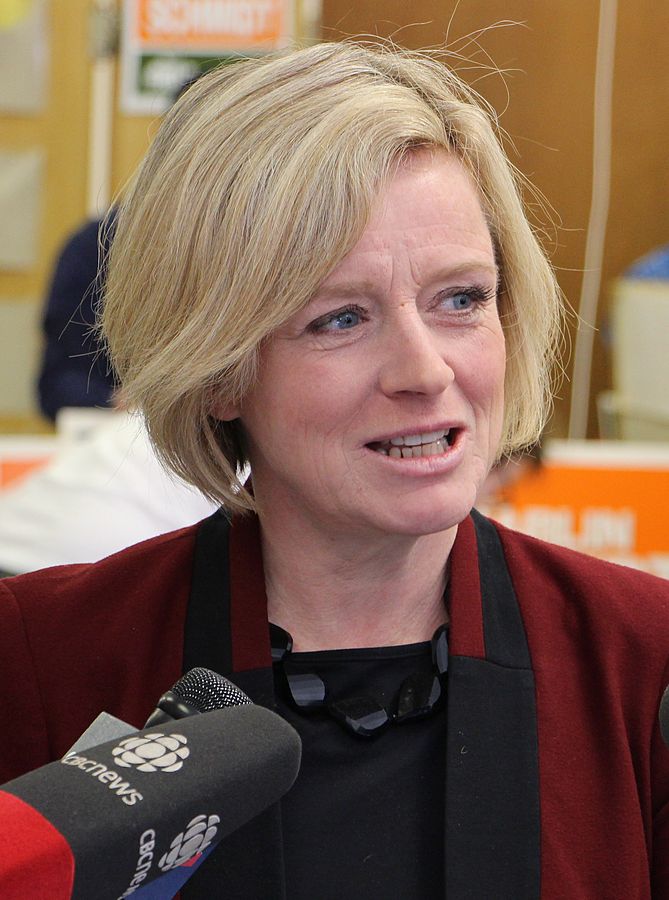
EDMONTON — The Alberta government has proposed eight new parks covering 4,000 square kilometres along the front ranges of the Rocky Mountains.
Premier Rachel Notley, saying Alberta’s parks must expand to keep up with a growing province, compares the move with former premier Peter Lougheed’s creation of Kananaskis Country west of Calgary.
“Today, just like in the 1970s, Alberta is seeing new pressure on its parks,” she said Friday.
“Just like premier Lougheed, today we are seizing the opportunity to create something special. That something special is the Bighorn Country.”
Bighorn Country lies in west-central Alberta along the eastern edges of Banff and Jasper national parks. It features mountains, foothills, forests, lakes, streams and the headwaters of the North Saskatchewan River that more than a million Albertans depend on for drinking water.
The area has been under consideration for protection since the 1980s and its core remains relatively free of energy, forestry and farming activity. The region is home to vulnerable species from grizzly bears to bull trout to harlequin ducks.
The plan calls for parks and land-use areas with a variety of permitted activities. Off-highway vehicles, horse packing and hunting would be allowed to continue, said Environment Minister Shannon Phillips.
Grazing leases would also continue, she said. No existing trails would be closed.
The plan comes with $40 million over five years to build and improve infrastructure. That would include bathroom facilities, better bridges, new parking spaces at trailheads, improvements to 240 campsites and the addition of 150 more.
Phillips praised the stewardship of local groups.
“There was so much really good local planning that already went on,” she said. “What we’re doing is building on that.”
But increased use creates the need for oversight, Notley said.
“We have heard many, many concerns from many folks about the need for better management. We’ve heard of user damage to the land, user conflicts, lack of protection of wildlife and a lack of investment.”
The plan also contains provisions for Indigenous co-management of the area, parts of which are heavily used for traditional ceremonies and other purposes.
Chiefs of the Stoney Nakoda Nations, which include the Bearspaw First Nation, Chiniki First Nation and Wesley First Nation, said in a release Friday night that have agreed to recommend to their Councils to work with the Alberta government “towards co-management of and sharing of economic benefits in the proposed Bighorn Country parks.”
“We are the stewards of this land and will be involved in the management of the new parks,” said Chief Wesley.
The chiefs also said they expect any creation of parks in their traditional territory “will be mindful of the Nations’ outstanding land claims in the region.”
Notley said adding a little infrastructure to the area’s great natural beauty could make it an important hub for tourism.
“We’re here today to create good jobs, to invest in tourism.”
Some remain suspicious.
“There’s no trust,” said Calvin Rakach of the Bighorn Heritage ATV Society.
Rakach puts little faith in promises to keep trails open. He pointed to southern Alberta’s Castle region, where the government plans to close some off-highway vehicle access.
He said he needs to get more details.
“I’ve got to hear what the conversation is and build my trust on that.”
Jim Duncan, reeve of Clearwater County in the heart of the Bighorn, called the plan “a positive step forward.”
He said he’ll take a close look at the proposed boundaries and ensure that industries which support local jobs don’t lose land access.
“I need to look at the plan,” Duncan said. “Everything is still on the table.”
He welcomes infrastructure spending that could boost tourism in communities such as Nordegg, Rocky Mountain House and Drayton Valley.
Environmental groups are enthusiastic.
“It’s amazing to see protection coming to these amazing lands,” said Joanna Skrajny of the Alberta Wilderness Association.
She said the boundaries are very similar to those first proposed in 1988 and are well-placed to conserve ecosystems.
A release from the Canadian Parks and Wilderness Society said: “We are simply overjoyed.”
The proposal is up for public comment. The province opened an online survey Friday which goes through to the end of January.